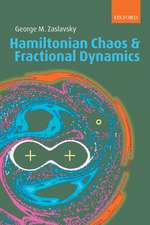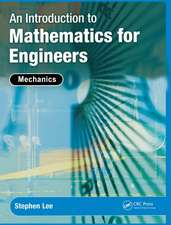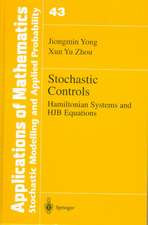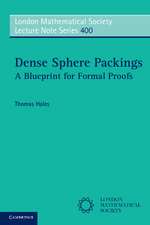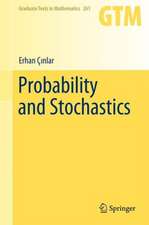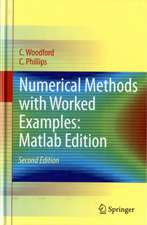Prescriptions for Working Statisticians: Springer Texts in Statistics
Autor Albert Madanskyen Limba Engleză Paperback – 22 ian 2012
Din seria Springer Texts in Statistics
-
 Preț: 400.60 lei
Preț: 400.60 lei - 15%
 Preț: 559.21 lei
Preț: 559.21 lei - 18%
 Preț: 903.62 lei
Preț: 903.62 lei - 20%
 Preț: 764.93 lei
Preț: 764.93 lei - 20%
 Preț: 643.55 lei
Preț: 643.55 lei - 20%
 Preț: 717.71 lei
Preț: 717.71 lei - 13%
 Preț: 487.08 lei
Preț: 487.08 lei - 20%
 Preț: 633.82 lei
Preț: 633.82 lei - 20%
 Preț: 697.48 lei
Preț: 697.48 lei - 15%
 Preț: 676.86 lei
Preț: 676.86 lei - 15%
 Preț: 621.10 lei
Preț: 621.10 lei - 20%
 Preț: 700.51 lei
Preț: 700.51 lei - 18%
 Preț: 743.11 lei
Preț: 743.11 lei - 18%
 Preț: 695.29 lei
Preț: 695.29 lei -
 Preț: 253.64 lei
Preț: 253.64 lei - 17%
 Preț: 525.27 lei
Preț: 525.27 lei - 17%
 Preț: 428.39 lei
Preț: 428.39 lei - 19%
 Preț: 571.81 lei
Preț: 571.81 lei - 20%
 Preț: 567.30 lei
Preț: 567.30 lei -
 Preț: 359.54 lei
Preț: 359.54 lei -
 Preț: 477.28 lei
Preț: 477.28 lei - 20%
 Preț: 570.35 lei
Preț: 570.35 lei - 15%
 Preț: 650.86 lei
Preț: 650.86 lei - 19%
 Preț: 626.93 lei
Preț: 626.93 lei - 18%
 Preț: 948.29 lei
Preț: 948.29 lei -
 Preț: 500.46 lei
Preț: 500.46 lei - 18%
 Preț: 746.59 lei
Preț: 746.59 lei -
 Preț: 403.75 lei
Preț: 403.75 lei -
 Preț: 403.37 lei
Preț: 403.37 lei -
 Preț: 394.71 lei
Preț: 394.71 lei - 18%
 Preț: 946.69 lei
Preț: 946.69 lei - 15%
 Preț: 578.67 lei
Preț: 578.67 lei - 15%
 Preț: 702.54 lei
Preț: 702.54 lei -
 Preț: 407.01 lei
Preț: 407.01 lei - 18%
 Preț: 895.89 lei
Preț: 895.89 lei - 15%
 Preț: 600.80 lei
Preț: 600.80 lei - 23%
 Preț: 684.78 lei
Preț: 684.78 lei - 19%
 Preț: 543.08 lei
Preț: 543.08 lei - 15%
 Preț: 595.86 lei
Preț: 595.86 lei -
 Preț: 423.18 lei
Preț: 423.18 lei - 15%
 Preț: 656.10 lei
Preț: 656.10 lei - 15%
 Preț: 682.90 lei
Preț: 682.90 lei - 18%
 Preț: 814.43 lei
Preț: 814.43 lei -
 Preț: 402.76 lei
Preț: 402.76 lei -
 Preț: 408.54 lei
Preț: 408.54 lei
Preț: 389.49 lei
Nou
Puncte Express: 584
Preț estimativ în valută:
74.53€ • 81.21$ • 62.80£
74.53€ • 81.21$ • 62.80£
Carte tipărită la comandă
Livrare economică 23 aprilie-07 mai
Preluare comenzi: 021 569.72.76
Specificații
ISBN-13: 9781461283546
ISBN-10: 146128354X
Pagini: 320
Ilustrații: XIX, 295 p.
Dimensiuni: 155 x 235 x 17 mm
Greutate: 0.45 kg
Ediția:Softcover reprint of the original 1st ed. 1988
Editura: Springer
Colecția Springer
Seria Springer Texts in Statistics
Locul publicării:New York, NY, United States
ISBN-10: 146128354X
Pagini: 320
Ilustrații: XIX, 295 p.
Dimensiuni: 155 x 235 x 17 mm
Greutate: 0.45 kg
Ediția:Softcover reprint of the original 1st ed. 1988
Editura: Springer
Colecția Springer
Seria Springer Texts in Statistics
Locul publicării:New York, NY, United States
Public țintă
ResearchCuprins
0 A Thoughtful Student’s Retrospective on Statistics 101.- 0. Introduction.- 1. The Introductory Model.- 2. The Regression Model.- References.- 1 Testing for Normality.- 0. Introduction.- 1. Normal Plots.- 2. Regression Procedures.- 3. Studentized Range.- 4. Moment Checking.- 5. Standard Tests of Goodness-of-Fit.- 6. Evaluation.- Appendix I.- References.- 2 Testing for Homoscedasticity.- 0. Introduction.- 1. Comparing Variances of Two Normal Distributions.- 2. Testing Homoscedasticity of Many Populations.- 3. Regression Residuals.- 4. Testing Homoscedasticity of Regression Residuals.- Appendix I.- References.- 3 Testing for Independence of Observations.- 0. Introduction.- 1. Parametric Procedures.- 2. Nonparametric Procedures.- References.- 4 Identification of Outliers.- 0. Introduction.- 1. Normal Distribution.- 2. Nonparametric Procedures.- 3. Outliers in Regression.- References.- 5 Transformations.- 0. Introduction.- 1. Deflating Heteroscedastic Regressions.- 2. Variance Stabilizing Transformations.- 3. Power Transformations (Box—Cox).- 4. Letter-Values and Boxplots.- 5. Power Transformations of Regression Independent Variables.- Appendix I.- References.- 6 Independent Variable Selection in Multiple Regression.- 0. Introduction.- 1. Criteria for Goodness of Regression Model.- 2. Stepwise Procedures.- 3. Multicollinearity.- References.- 7 Categorical Variables in Regression.- 0. Introduction.- 1. Two Sample Tests.- 2. Analysis of Variance via Regression (Model I).- 3. Components of Variance (Model II).- 4. Dichotomous Dependent Variables.- References.- 8 Analysis of Cross-Classified Data.- 0. Introduction.- 1. Independence in the r1 × r2 Table.- 2. Log-Linear Models in the r1 × r2 Table.- 3. The Three-Dimensional Table.- 4. Analysis of Cross-Classifications withOrdered Categories.- 5. Latent Class Model.- Appendix I.- Appendix II.- References.- Index of Reference Tables.




